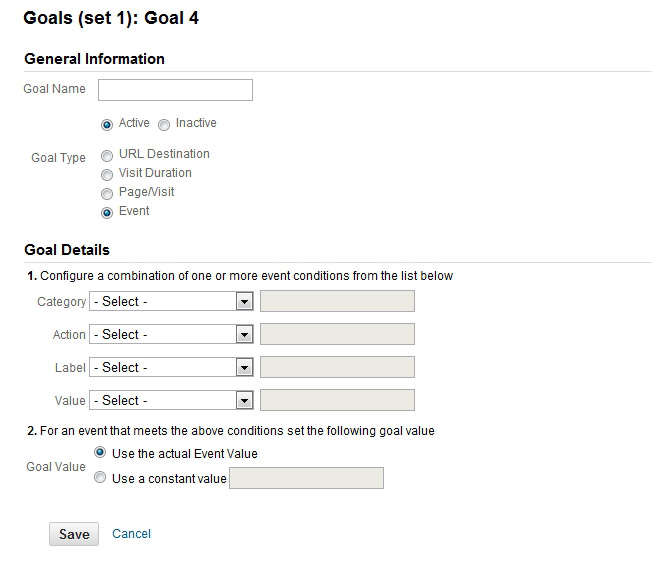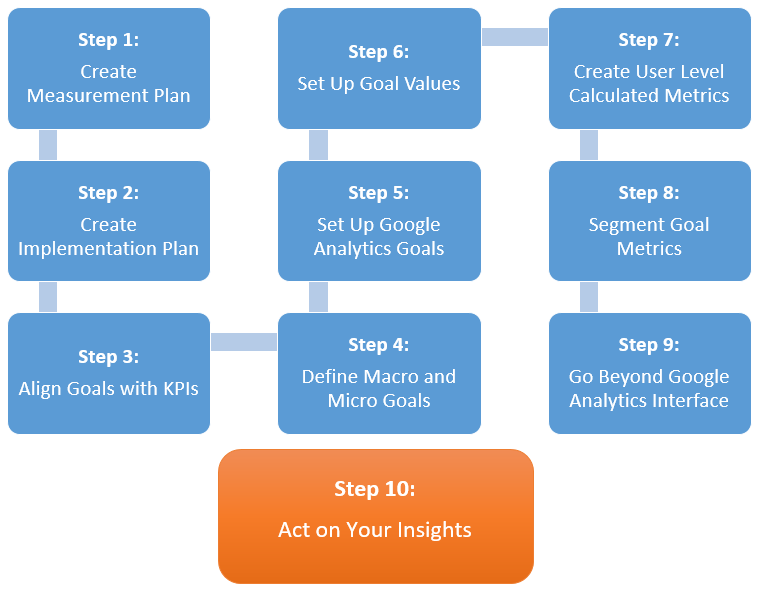Learn What Data Is Google Analytics Goals Unable to Track
Demystifying Google Analytics Limitations: Uncover What Information Goals Can not Track
In the world of digital analytics, Google Analytics stands as a powerful tool that provides important insights into web site efficiency and customer behavior. From the details of customer communication with vibrant web content to the intricacies of cross-device user journeys, these constraints dropped light on areas that might continue to be obscured from traditional analytics perspectives.

Customer Interaction With Dynamic Web Content
Individual interaction with vibrant material plays a crucial function in recognizing user behavior on internet sites and maximizing the overall user experience. Dynamic web content refers to elements on a website that can change without the requirement for a complete page reload. This includes interactive aspects such as pop-ups, sliders, forms, and videos that reply to user actions in real-time. By tracking individual interactions with vibrant web content, internet site proprietors can get beneficial insights right into user interaction, choices, and habits.
Google Analytics uses numerous devices to track user communications with dynamic material, such as occasion tracking and digital pageviews. Occasion tracking allows you to keep track of certain user activities, like clicking a button or watching a video, providing data on exactly how users connect with dynamic aspects. Online pageviews can be utilized to track communications that do not bring about a brand-new page tons, supplying an extensive sight of individual interaction with vibrant web content. By evaluating this data, internet site owners can make educated choices to improve individual experience and drive conversions.
Cross-Device User Journeys
How can modern-day analytics devices track the complicated paths users take across numerous gadgets in their on-line trips? Cross-device customer journeys present a substantial challenge for tracking and assessing customer actions properly. As customers engage with websites or apps utilizing different devices such as smart devices, desktop computers, and tablets, it becomes essential to understand how they relocate between these systems to maximize individual experience successfully.
Google Analytics faces restrictions in tracking cross-device customer trips because of personal privacy worries and technical restraints - what data is google analytics goals unable to track. While it can give insights right into individual gadgets' communications, tracking a seamless user journey throughout several tools continues to be a challenge. This limitation can cause insufficient information and fragmented customer understandings, making it difficult for organizations to create a unified sight of the customer trip
To resolve this issue, organizations can use innovative analytics devices that provide cross-device monitoring abilities, permitting them to acquire an extra all natural understanding of customer actions. By leveraging these devices, companies can link the gap in tracking cross-device user journeys and enhance their digital methods for a smooth user experience.
Offline Conversions and Attribution
As companies browse the obstacles of tracking cross-device user journeys, an additional essential element to think about is the world of offline conversions and attribution in the world of data analytics. While Google Analytics gives important insights right into on the internet customer habits, it drops short when it pertains to tracking conversions that happen offline. This limitation presents a significant obstacle for companies that have both online and offline sales channels.
Offline conversions, such as purchases made in physical stores or with call facilities, are essential to understanding the total consumer journey. Without the capability to attribute these offline conversions to specific on-line interactions, services might struggle to properly determine the influence of their digital advertising and marketing efforts.
To address this void, companies can discover alternative services such as incorporating CRM systems with on-line analytics devices why not try here or utilizing distinct coupon codes that can be mapped back to on the internet campaigns. By bridging the void in between online and offline information, companies can gain a much more extensive understanding of their clients' habits and improve their total advertising and marketing approaches.
Individual Individual Identification
In the realm of data analytics, the capability to accurately recognize individual users across various on the internet touchpoints is an important obstacle for businesses seeking to personalize and optimize their advertising methods. While Google Analytics supplies beneficial understandings right into individual habits and communications, it falls short in enabling the identification of specific individuals as a result of personal privacy problems and technological constraints. Google Analytics utilizes special identifiers such as cookies to track customer sessions and actions, yet these do not relate to determining private users in a personal sense.

Data From Secure Pages
Regardless of the increasing occurrence of protected web pages on web sites, acquiring data from these encrypted resources provides a distinct obstacle for electronic analytics platforms like Google Analytics. Protect pages, suggested by HTTPS in the URL, encrypt information exchanged in between the user's web browser and the website's web visit our website server to ensure privacy and safety and security. While this security is important for shielding sensitive info, it additionally positions constraints for tracking user habits and celebration analytics information.
Google Analytics deals with challenges in accumulating comprehensive info from safe and secure pages because of the security protocols in position. Consequently, particular data points such as reference resources, keyword searches, and even some individual communications might not be fully captured when individuals access a web site via a secure connection. This restriction can influence the precision and efficiency of the data analysis, resulting in gaps in comprehending individual habits and choices on safe and secure pages.
To navigate this difficulty, digital analysts might require to discover different tracking methods or leverage other tools specifically designed to gather understandings from secure pages. By adjusting techniques to accommodate these restrictions, companies can still obtain important analytics in spite of the constraints presented by encrypted connections.
Verdict
In verdict, Google Analytics has restrictions in tracking user communication with dynamic web content, cross-device individual trips, offline conversions, private customer identification, and information from protected web pages. In spite of its valuable understandings, Google Analytics may not supply a total image of individual involvement across numerous touchpoints.
Individual communication with dynamic web content plays a crucial function in understanding individual actions on sites and maximizing the overall individual experience. By tracking customer interactions with dynamic web content, site proprietors can obtain important understandings into individual involvement, preferences, and habits.
Google Analytics uses one-of-a-kind identifiers such as cookies to track individual sessions and habits, however these do not relate to determining specific users in a personal sense.
As a result, specific information factors such as referral sources, keyword searches, and also some customer interactions may not be completely recorded when customers access a site with a safe and secure connection.In final thought, Google Analytics has restrictions in tracking customer communication with vibrant material, cross-device individual trips, offline conversions, private customer recognition, and data from protected pages.